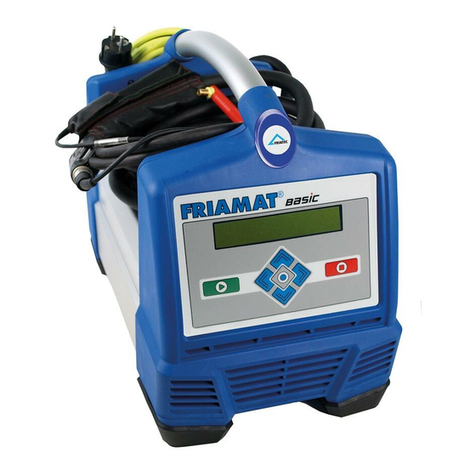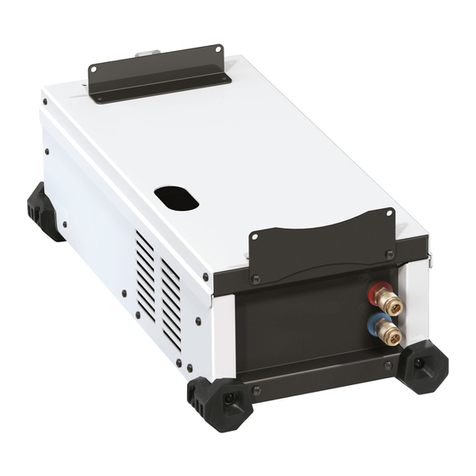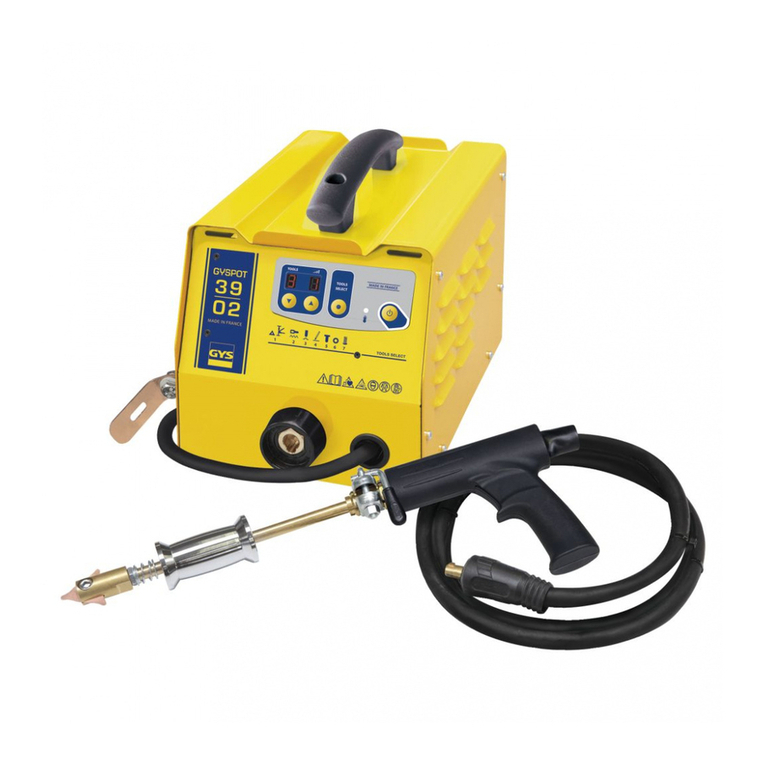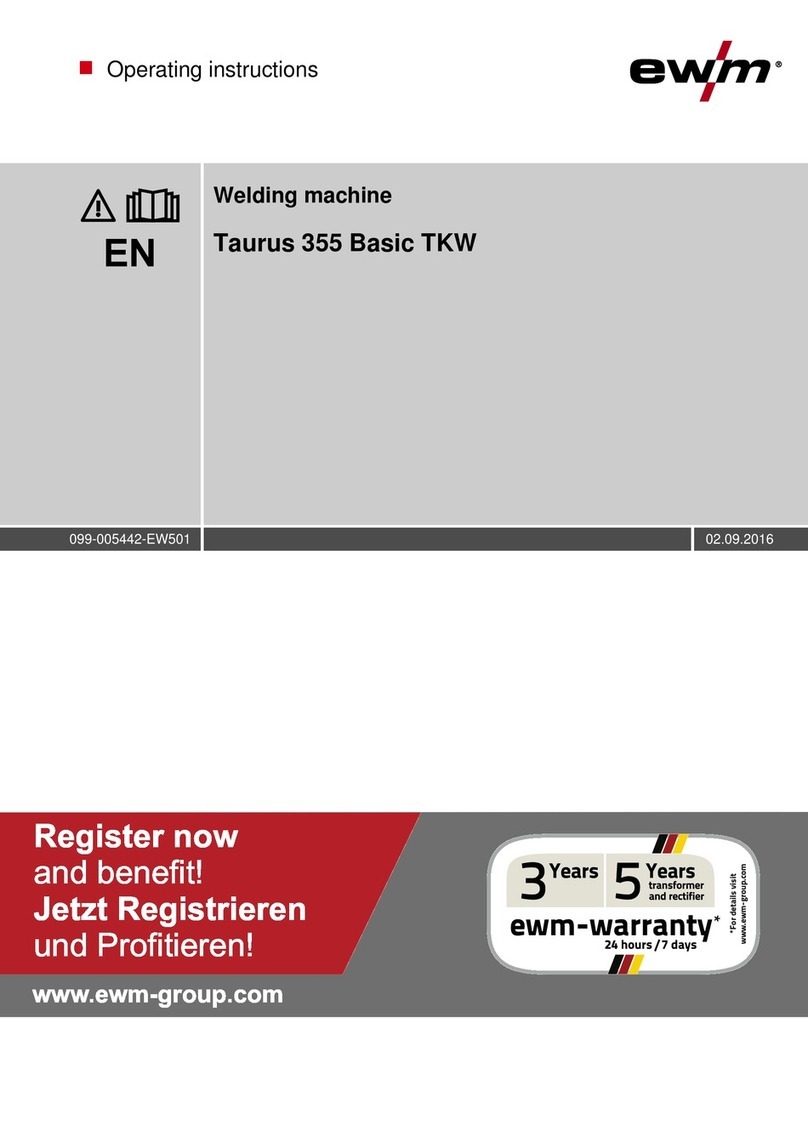TNZ TT 350 mig/mag User manual

Operating instructions
of the welding inverter
TT 350 mig/mag
Content:
1. Description
2. Technical data
3. Safety regulations
4. Thermal and short-circuit protection
5. utting into operation
6. Maintenance
7. Disposal

1. Description
1.1. Machine construction
The welding machine TT 350MIG/MAG (hereinafter referred to as the source) is
constructed as a power frequency converter (inverter).
Modern principles and knowledge in the field of semi-conductor technology and
controlling electronics have been used when constructing the source. Due to that the
source is characterized by:
- high power at small dimensions and low weight
- high efficiency
- quality welding characteristics
- stability of parameters independent on the electric power voltage variation
Electronic control ensures parameters stability and contains the circuits for the
source protection in case of failure or overload and ensures optimal welding
properties.
The source is designed as a compact mobile machine.
A massive all-metal four-pulley wire feeder with driven feeder pulleys is a standard.
On the front panel there are quick plugs for connection of the welding cables, a euro-
terminal for connection of the welding torch for setting of the optimal welding
parameters for the individual welding technologies, two digital measuring devices and
three LEDs
The source cooling is forced with a ventilator.
1.2. Controls
ositions and names of the individual controls are given in the pictures:
- pic.1 – front panel
- pic.2 – back panel
- pic.3 – feeder panel
Explanation of the individual controls is given directly at setting of the source for the
selected welding processes.
1.3. Welding technology
The source is determined for welding by:
- coated electrode (method MMA)
- method MIG/MAG (it is possible to use Fe wires, including stainless wires and Al-
wire)
- method WIG (arc ignition is made by touching the electrode)
The source power enables to use coated electrodes in range from Φ1.6 to Φ8mm
and wire in range from Φ0.6 to Φ1.2mm
reparation and control of the source for individual welding technologies are
described in Chapter 5.

2. Technical data
Input voltage/frequency 3x400V/50Hz
Output current I
2
(A)
- technology MMA X = 100% 250A
X = 60% 300A
X = 35% 400A
- technology MIG/MAG X = 100% 220A
X = 50% 270A
X = 40% 350A
Open-circuit voltage
- technology MMA 73V
- technology MIG/MAG 70V
Regulatory range of the welding current 5 - 350 A
Regulation of the welding current continuous
Thermal class of isolation F
Cover degree I 21
ower factor cos φ
1
at maximal current 0.9
Recommended power supply protection: safety fuse 25 A/slow
breaker 25A/C
Corresponds to standard ČSN EN 60 974-1
Note:
X = load factor of the source at the determined ambient temperature (the ambient
temperature is determined for 25
o
C)
X determines the time during which the source can be loaded by the given welding
current without the thermal protection making any reactions.
This time refers to 10 minute working cycle.
3. Safety regulations
3.1. Introduction
The source is made in accordance with the present technical knowledge and safety
requirements.
Nevertheless there is a danger of health or life hazard of the operator or other
persons, damage or destruction of the welding machine and other material values of
provider at unprofessional operation or wrong use.
Therefore the source operators must have relevant qualification and knowledge of
the welding technology and must follow the instruction given in these operating
instructions. It is necessary to remove immediately all failures, which can influence
safe operation of the source.

3.2. Provider and operator duties
The provider may allow the work with the source only to the persons, who are
informed about the safety regulations, trained in the source manipulation and
informed about the source operating instructions.
The person authorized to work with the source is obligated to follow all basic
regulations about safety of operation, with special regard to warnings given in these
operating instructions.
3.3. Personal protective outfit
The source operator must have strong working shoes, which also insulate in wet
environment, protective working gloves, shield with protective filter for eyes
protection, suitable hardly flammable clothes and aural protectors at increased noise
level.
When other persons are in the source vicinity, they must be instructed about possible
danger, have the protective equipment available, possibly they must be protected
with protective curtains or screens.
When some animals move within the reach of the welding workplace, it is necessary
to adopt measures for their protection, the animals must be prevented from access to
the welding workplace.
3. . Risks resulting from the action of harmful vapours and gases
The smoke and harmful vapours occurring during the welding are deleterious. It is
necessary to exhaust them using suitable equipment and at the same time it is
necessary to ensure sufficient supply of fresh air.
3.5. Risks resulting from flying off sparks
It is necessary to remove all flammable objects from the source working area.
Volatile, flammable matters, whose vapours are easily inflammable, are especially
dangerous.
No welding works can be carried out in the area serving for storage of gases, fuel,
oils and similar matters, because also the remains of these matters represent
explosion and fire risk.
Special regulations apply in area with fire and explosion risk – therefore their
consistent following is necessary.
3.6. Other necessary measures
Welding sources are generally in the term of interference voltage designated for work
in the industrial area. When it is used in the living space, special measures are
necessary for elimination of the interference. Therefore the user is obligated to
evaluate whether he cannot cause electromagnetic problems in vicinity at the source
installation. In the first place it is necessary to consider aspect of signal and
telecommunication leads, radio and television receivers and transmitters, computers,

safety equipments, health of persons in vicinity, e.g. at the cardiac stimulators use
etc.
The source must be disconnected from mains by unplugging the fork of the supply
cable at any manipulation with the source (change of the standing place, removing of
the covers at a regular inspection).
3.7. Duties of operator before beginning work
Before beginning work with the source the operator is obligated:
- to study these operating instructions
- to check: the supply cable (the insulation must not be damaged, the cable must
be firmly fixed in the source and in the fork).
The exchange of the damaged cable must be made by a worker with a
corresponding electro-technical qualification.
- the welding cables (the insulation of the cables and electrode holder must not be
damaged).
In case of damage of the insulation of the cables and electrode holder, it is
necessary to change them.
3.8. Duties of the source provider (owner)
The source owner is obligated:
- to familiarize with these operating instructions
- to ensure immediate removal of failures and defects reported by the source
operator
- to ensure regular inspections of the source
- to ensure regular revisions of the source in terms of ČSN 33 1500 and ČSN
EN 05 0630
3.9. Regular inspections
The aim of the inspection is to ensure failure-free operation of the source.
The inspection term is given with regard to frequency of use and environment in
which the source works.
The inspection is carried out by a person with a corresponding electro-technical
qualification.
The inspection does not replace the revision!!
rior to carrying out of the inspection, the source must be disconnected from mains
by unplugging the cable fork.
The inspection consists from the following steps:
- remove the covers of the source
- clean with the pressure air
- check the position of the conductors and state of electrical connections
(repair the damaged ones)
- check to fixation of the cable in the machine and in the fork
- measure continuity of perimeter of the protective conductor
Measurement of continuity of the protective circuit:
- connect the source output ELV to protective contact of the fork of the main
cable and to the farthest part of the cover where danger voltage may occur.

Using a suitable regulator, ensure that alternate current 10A flows through the
created circuit.
- measure a voltage drop between “the outside protective-conductor terminal”
and various parts of the cover where danger voltage may occur. Value of this
voltage must not exceed 2.6 V.
All found defects must be removed before putting into operation again!!
3.10. Regular revisions
The source is subject to regular revisions according to ČSN 33 1500, ČSN 05 0630
and ČSN EN 60 974-1.
The revisions are carried out by workers with a corresponding electro-technical
qualification and a report on revision (see ČSN 33 1500) must be issued.
ATTENTION: If the source does not meet some of next given points in safety
respect, it is necessary to put it out of operation immediately.
a) Inspection
Mask off the source after disconnection of the power by unplugging the power
supply. Carry out a visual inspection to see whether the electric parts are not
damaged (selector switches, connectors, terminal box, el. supplies, bushings etc.).
Carry out the control of screw and slip connections, their possible tightening or repair.
Control visually whether the mechanical parts are not released or the safe air
distances and surface ways are not disturbed. Possible defects must be removed
prior to further use.
b) Control of the guard wire
The guard wire must not be damaged or interrupted. Test the strength of individual
interconnections on the connections and connectors by hand.
Continuity of the guard circuit is checked with the power supply of minimally 10A from
the source ELV and for the period of 1 s. Checking is carried out between clamp E
and various points, which are components of the guard circuit. The guard circuit is
regarded as a compact if the voltage drop is up to 2.6V at the test current 10A.
c) Insulation resistance
Insulation resistance is measured with the voltage 500V ss. Its value according to EN
60 974-1 must not be lower than:
Input clamps (primary) – output clamps (secondary) 5 Mohm
Input clamps (primary) – frame 2.5 Mohm
Output clamps (secondary) - frame 2.5 Mohm
Control circuit (secondary transformers for power supply
of the control circuit) - frame 2.5 Mohm
d) Open-circuit voltage
Voltage measured on the output clamps of the machine must be in tolerance ±10% to
the value given on the machine label.

3.11. Placing and installation
Due to the stability ensuring it is necessary to place the source on a flat and solid
base. Overturning of the source in operation can cause accident of the operator or
life hazard.
In the area with fire and explosion risk it is necessary to follow the special
regulations. Before the source is switched on, it is necessary to check whether the
other persons cannot be endangered.
. Thermal and short-circuit protection
.1. Thermal protection
The source is equipped with a thermal protection, which protects it from damaging or
destroying when exceeding the load factor (see point 2).
When the thermal protection is effective, the converter is blocked and there is neutral
voltage on the source output.
This state is signalled by the yellow indicator “TEM ” on the front panel.
The cooling ventilator is also in operation at this state. Therefore do not switch the
source off to allow it to cool down.
The thermal protection automatically restores the source function after cooling down
and the yellow indicator TEM is off.
ATTENTION!
After the thermal protection effect, put the electrode holder on insulated place so that
accidental short-circuit could not occur after restoring of the source function and thus
a possible accident or damage to property could not occur.
.2. Short-circuit protection
When putting the source output into a long-term short-circuit in the MIG/MAG mode
(longer than ca. 0.5 sec.), it will be blocked and on the front panel the red warning
light "ERROR" will be on.
Restoration of the source function will be made by switching off the main switch and
by switching it on again after ca. 1 sec. Before this it is necessary to remove the
short-circuit, which caused the source blocking.
5. Putting into operation
5.1. Preparation of the source for putting into operation
Read the previous chapters, especially the chapter “3. Safety re ulations” prior the
first putting into operation.
oints 5.1.1 – 5.1.3. are valid for all welding processes for which the source is
designated.

5.1.1. Source placing
The source must be placed on a solid and flat base to ensure sufficient space for the
cooling air supply and outlet in front of the both faces (ca. 500mm). The metal fall-out
(e.g. at the grinding) must not be sucked into the machine directly.
The welding source is made with the cover I 21, which means:
-protection against penetration of foreign matters with diameter bigger than 12
mm
-protection against vertically dripping water
With regard to the cover level, the source can be used and stored so that it would not
be exposed to direct weather effects. Especially it is not allowed to use it and store it
in the rain.
5.1.2. Welding cables
The welding cables must have a cross-section corresponding to the current loading
and must be finished with corresponding quick plugs.
The ground clamps and electrode holder must correspond to the current loading.
The welding conductors, electrode holder must not show any damage.
It is necessary to connect the ground clamp on the weldment as near to the welded
place as possible.
5.1.3. Source connection to supply mains
The source is constructed for connection to 5-conductor main TN-C-S with voltage
3x400V/50Hz (see point 2).
Installation of the main, plug for the source connection and its protection must
correspond to the valid standards and electro-technical regulations.
5.2. Welding process MMA
- connect the source to the supply mains
- switch on the main switch of the source ”20“
- turn switch “9“ into the position “MMA“
- connect the welding cables into the plugs “13“ in polarity corresponding to the
type of the electrode used
- press and release the button “5“ – on A-metre “6“ the segment “A“ flashes
- set the required welding current by the regulator “8“ – the current value is
displayed by A-metre “6”.
When welding A-metre measures the actual welding current. Its value stays
displayed in A-metre for 3 s after finishing the welding so the operator can
retrospectively control the set and actual value of the current.
5.2.1. Function “HOT-START“
The function is controlled by the switch “16“.
When the function “HOT-START“ is switched on, the welding current is increased
approximately by 50% of the set value for the period of 0.4 s at arc ignition.

This function is not recommended when welding of thin materials. Due to increase of
the current, the material can be burnt up.
5.2.2. Use of the remote control
If it is necessary to set amount of the welding current directly at the welding
workplace, it is possible to connect the remote control “DO1” to the source.
- connect the remote control into the plug “15“ on the front panel
- switch over the switch “9“ into the position “REMOTE“. Then the welding current
is set by the potentiometer on the remote control “DO1“.
Disconnection of the remote control is made by the switch “9” from the position
“REMOTE“ into the position “MMA“ and by pulling the control connector from the
source panel. ress the lever " USH" on the connector “REMOTE“ to pull it out.
Attention
If the switch “9” is in the position “REMOTE“ and the remote control is disconnected
from the connector “15“, the source regulation is in an undefined position. This is
indicated in such way that the source is fully blocked or provides little current.
5.3. Welding process MIG/MAG
- switch over the switch “20“ into the position “0“
- disconnect the source from the supply mains by pulling out the fork of the
supply.
5.3.1. Assembly of the gas bottle
Important: only a gas bottle with height max. 120 cm can be fixed to the source
put the bottle on the platform “25“
put the bottle into the strap “19“ and secure with a chain
unscrew the protective cover of the gas bottle
remove the sediment impurities by a short opening of the valve on the bottle
(direct the opening in such way that the gas flow does not hit the operator or
another person)
screw on the pressure control valve and tight the backnut firmly
if CO
2
is used, connect heating of the pressure control valve. Connect the heating
cable of the pressure control valve to the connector “23” – polarity does not make
any difference (heating is not necessary at flow smaller than 6 litres/min)
interconnect the pressure control valve to the gas-fixture “22” using a hose
5.3.2. Assembly of the welding torch
Follow the instructions of the torch producer.
insert the correctly assembled torch into the central connector “17” (bowden
cable and diameter of the mouth must correspond to the welding wire)
tighten the mounting nut of the torch by hand

5.3.3. Application of the wire coil and installation of the wire electrode
lift off the side plate of the source
assemble feeding pulleys for the required diameter of the wire (assembly and
change of the pulleys is described in point.5.3.5.)
unscrew the plastic backnut of the coil carrier
put the coil with the reduction carrier on the driver so that the arresting pin of the
driver would lock into the opening of the carrier reduction (keep the correct
direction of unwinding of the wire)
secure the coil by screwing of the plastic nut
Note: Set the brake of the coil carrier so that the coil would not move any further
when the pulleys stop. Set sensitively because excessive tightening of the brake
would lead to the current overloading of the feeding mechanism engine. Setting of
the brake is made with a screw, which is accessible after unscrewing of the plastic
backnut of the coil carrier.
put the tension device of the feeding mechanism forward, the pressure pulleys go
up automatically
insert the wire electrode through the leading jet of the pulley mechanism into the
leading tube of the torch (in length ca. 5 cm)
check whether the wire locked into the grooves in the feeding pulleys when
pressing the levers with the pressing pulleys
tip over the tension device into a vertical position
adjust the pressure using a screw shackle so that the wire electrode could not be
deformed and good feeding could be ensured at the same time
put a cleaning felt swab onto the wire in front of the leading bowden cable and
secure it with a clamp (this measure protects the feeding mechanism and welding
torch from choking with impurities stuck on the wire)
unfold the torch hose into a straight direction if possible
connect the main cable “18“
switch over the power switch “20“ into the position “I“
switch over the switch “9“ into the position “MIG/MAG“
switch over the switch “14“ into the position “2T“
press the leading button “26“ – the feeding mechanism leads the wire into the
torch
when the wire goes out, release the button
!! Do not point the torch at yourself or at any other persons when applyin the
wire!!
5.3. . Setting of flow of the protective gas
press the gas blow button “21“
set the required gas flow by the adjusting screw on the lower part of the pressure
control valve
release the button

5.3.5. Assembly and change of the feeding pulleys
The feeding pulleys must be adjusted to the diameter and composition of the wire
used for welding to ensure the optimal feeding of the wire electrode.
The pulleys for welding with a steel wire of diameter 0.6 to 1.2 mm are supplied with
the source.
The special “U” shape pulleys are necessary for welding aluminium (they are not
supplied). The change procedure:
put the power switch into the position “0“
lift off the side plate of the source
put the tension device forward – the pressure pulleys go up automatically
unscrew the plastic retaining parts of the feeding pulleys and remove the pulleys
put on the correct pulleys according to the used welding wire (value of the wire
diameter is stamped on the side of the pulley)
screw the plastic retaining parts
put down the pressure pulleys
tip over the tension device into a vertical position
5.3.6. Preparation of the source for welding, setting of the welding parameters
The source is prepared according to points 5.3.1. to 5.3.5
connect the ground welding cable into the plug “-13“ and connect to weldment
switch over the power switch of the source “20“ into the position “I“
check the position of the switch “9“ – “MIG/MAG“, the switch “14“- “2T“
press the button “5“
segment at “m/min“ – setting of the feeding speed of the wire flashes on the
upper display “6”
set the required value of the wire feeding with the control element “8“
press the button “5“
segment at “V“ – setting of the arc voltage flashes on the lower display “7”
set the required value of the voltage with the control element “8“
start welding
Thus the basic setting of the source for welding of MIG/MAG technology is finished.
Arc dynamic is finally adjusted by the control “10“
If further adjustment of the process parameters is necessary, it is made by repeating
the procedure according to point 5.3.6.
The source is supplied with other functions to enhance the useable qualities. These
will be described below.

5.3.7. After-blow of protective gas
This function enables to set a delayed valve switching off after finishing the welding
process. The regulation range is 1s-20s.
This function is used when it is necessary to protect the weld from oxidation or when
cooling the place of the weld finish.
Regulation is made with the potentiometer “27“.
5.3.8. Burnback of the wire
This function ensures that after finishing the welding the wire always burns out to the
same length. The condition is that after releasing the torch button, the welder keeps
the arc until its spontaneous extinction.
The function is controlled with the potentiometer “28“.
5.3.9. Process of “tack welding”
It is switched on and set with the potentiometer “11”. This function ensures that the
welding process always takes the same time.
- set the required time of welding with the potentiometer “11“
- switch “14“ is in position “2T“
- start the welding process with the torch button – after the set time the process
finishes automatically
- the process is repeated by releasing and new pressing of the torch button
The switch of the potentiometer “11” must be switched off (position “0”) for use of the
continuous mode of the welding.
5.3.10. Process of cyclic welding
It is switched on and set with the potentiometer “11“ and “12“.
- set the time of the arc burning with the potentiometer “11”
- set the time of the arc burning interruption with the potentiometer “12“
- start the welding process with the torch button – when the arc burning is
interrupted, move the torch into a new place of the weld. The process is
repeated automatically.
The switches of the potentiometer “11” and “12” must be switched off (position “0”)
for use of the continuous mode of the welding.
5.3.11. Welding mode “ T“
This mode is used for long welds. Benefit of such mode is that after starting the
welding process it is not necessary to keep the torch button pressed.
Activation of “4T“ function
- switch over the switch “14“ into the position “4T“
- press the torch button for longer period (about 1s) and then release – thus the
welding process starts

- after finishing – press the torch button for longer period (about 1s) and then
release
5.3.12. Entering of the welding parameters MIG/MAG into memory
This function is good in case that welding of a few same products is repeated.
The welding parameters are optimised on the given product and then they are
entered into the machine memory.
The parameters are accessed from memory at repeating production of the given part
by which use of the same condition during welding is ensured.
switch over the switch of the welding procedures “9“ into the position MIG
press the button “4“ ROG – xx is displayed on the lower display (number of the
last free position in memory)
press the button “4“ ROG for longer period until the displays flash (thus the set
data of the feeding speed and voltage volume are entered into the given memory
cell) – it is possible to enter up to 15 programs
return to the position of the parameter setting by a brief pressing of the button “4“
ROG
5.3.13. Accessing the welding parameters MIG/MAG from memory
switch over the switch of the welding procedures “9“ into the position ROG MIG
briefly press the button “4“ ROG
xx is displayed on the lower display
list the number of the program whose parameters we want to weld using the
button “5“
wait for short time until the parameters are displayed
start welding
5. . Welding WIG (TIG)
5. .1. Preparation of the source
- switch over the switch “20“ into the position “0“
- disconnect the source from the supply mains by pulling out the cable fork from
the plug
- switch over the switch of the welding procedures “9“ into the position ”WIG”
- connect the ground cable into the plug “13+“
- connect the assembled welding torch for WIG technology into the plug “13-“
- connect the protective gas hose to the torch
- switch over the switch ”16 – HOT-START“ into the position “0“
- open the gas valve with a control element on the torch
- set the required protective gas flow by the control element of the pressure control
valve
- close the gas valve on the torch
- connect the source to the supply mains
- switch on the source with the switch “20“

5. .2. Welding
- press the button “5“ – the segment “A“ of the display “6“ flashes
- set the required welding current with the control “8“
- start the protective gas with the control on the torch
- start welding by touching W-electrode to the weldment
- welding is finished by taking away the electrode from the weldment
Note: in this case it is convenient to use the remote control (see Chapter 5.2.2.). It is
possible to carry out the start at lower current and when finishing welding it is
possible to lower the current. Thus the W-electrode is saved.
6. Maintenance
It is necessary to carry out a regular maintenance of the source, welding cables and
torch to ensure trouble-free operation.
rior to every maintenance it is necessary to disconnect the source from mains by
unplugging the fork of the cable from the plug.
6.1. Everyday control
This activity is carried out by the source operator. It is checked:
- state of the main cable
- state of the welding cables and torch
- cleanness of the source
6.2. Regular special inspections
The control is made by a worker determined by the source owner for this activity. The
worker must have a corresponding electro-technical qualification.
When inspecting the worker follows the requirements EN ČSN 05 0630.
- remove the upper cover of the source and blow settled impurities out with dry
compressed air depending on the way of use and place where the source works,
but twice a year at least
- turn to a special service or producer to remove all possible failures
6.3. Regular revisions
When doing this activity, proceed according to point 3.10. Chapter.3
7. Disposal
The source does not contain any special or dangerous wastes. Therefore it is
possible to use the metal and plastic parts for recycling, the rest can be dumped
when finishing the service life.
Table of contents
Popular Welding System manuals by other brands

Lincoln Electric
Lincoln Electric Power-Arc 5500 Operator's manual

Miller
Miller SRH 2000 CHANTIER owner's manual
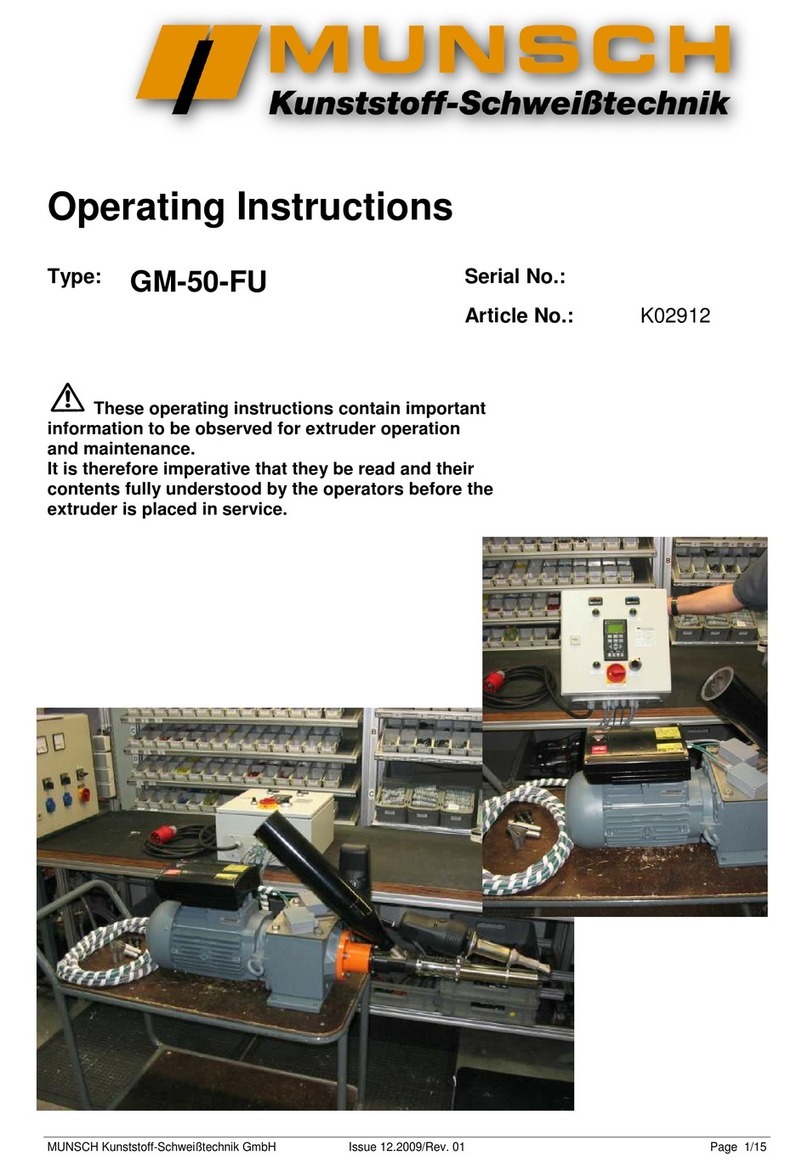
Munsch
Munsch GM-50-FU operating instructions

Lincoln Electric
Lincoln Electric VANTAGE 500 CUMMINS 500 Operator's manual
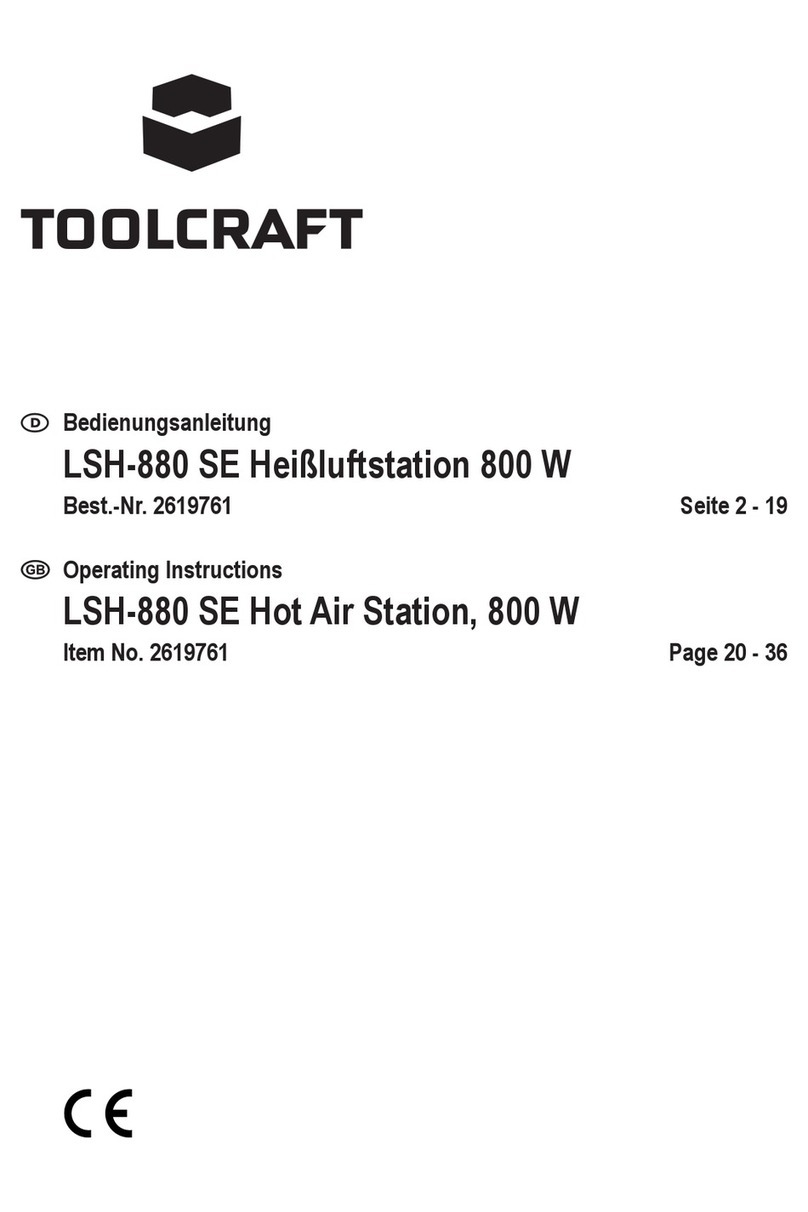
TOOLCRAFT
TOOLCRAFT LSH-880 SE operating instructions

Kemppi
Kemppi Kempact MIG 2530 operating manual
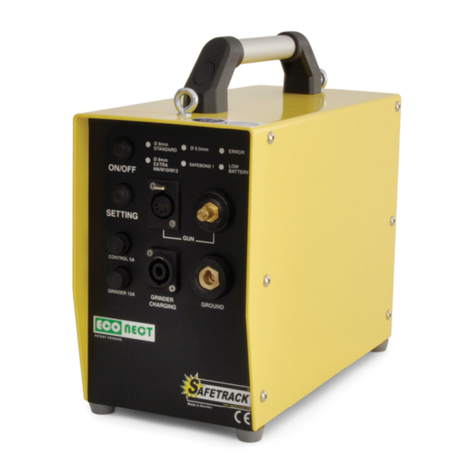
SAFETRACK
SAFETRACK ECONECT SAFE 94350 instructions

Miller Electric
Miller Electric Millermatic 212 Brochure & specs
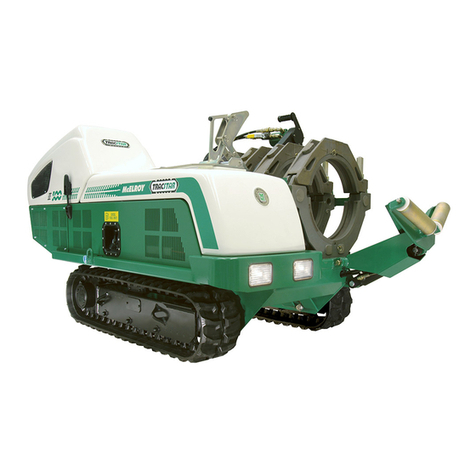
McElroy
McElroy T-500 I Series manual
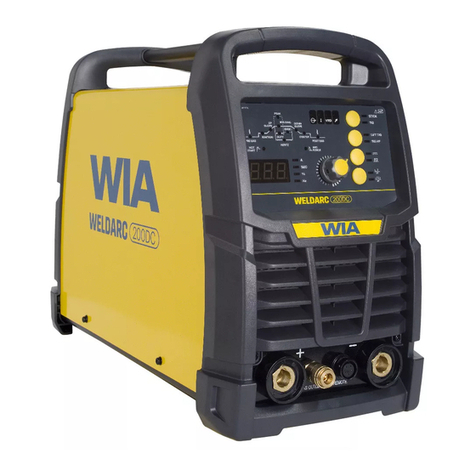
WELDING INDUSTRIES
WELDING INDUSTRIES WELDARC 200 DC Operator's manual
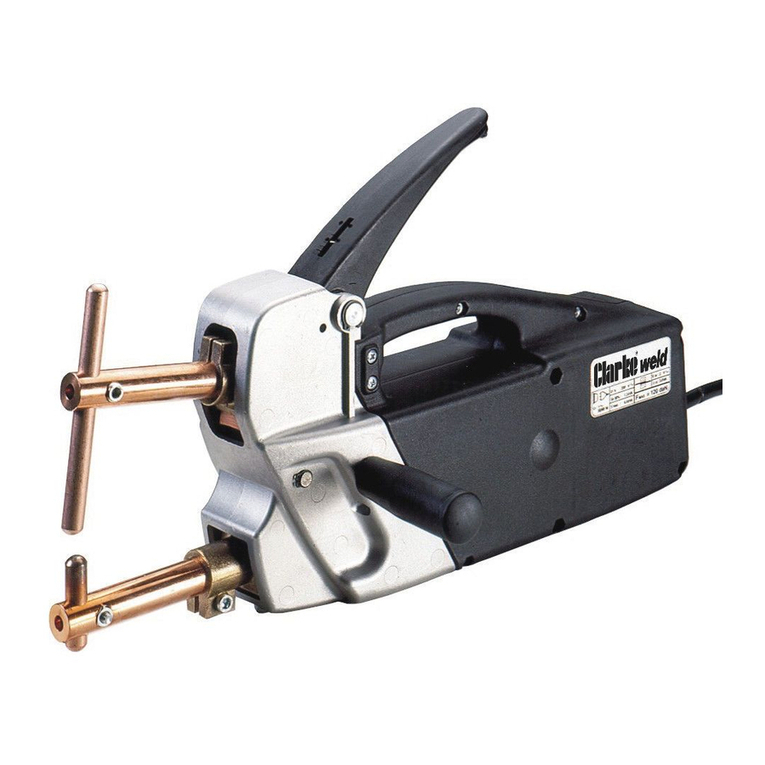
Clarke
Clarke CSW6T Operating & maintenance instructions
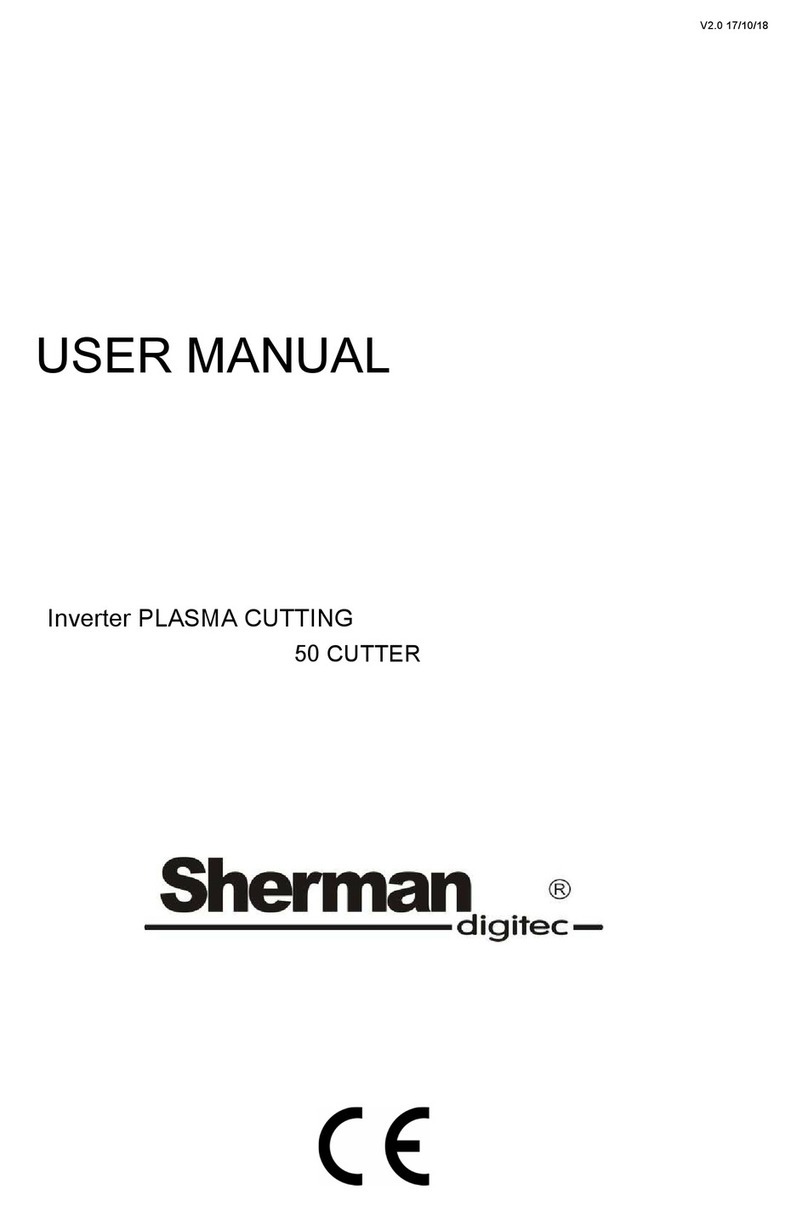
Sherman
Sherman 50 Cutter user manual
